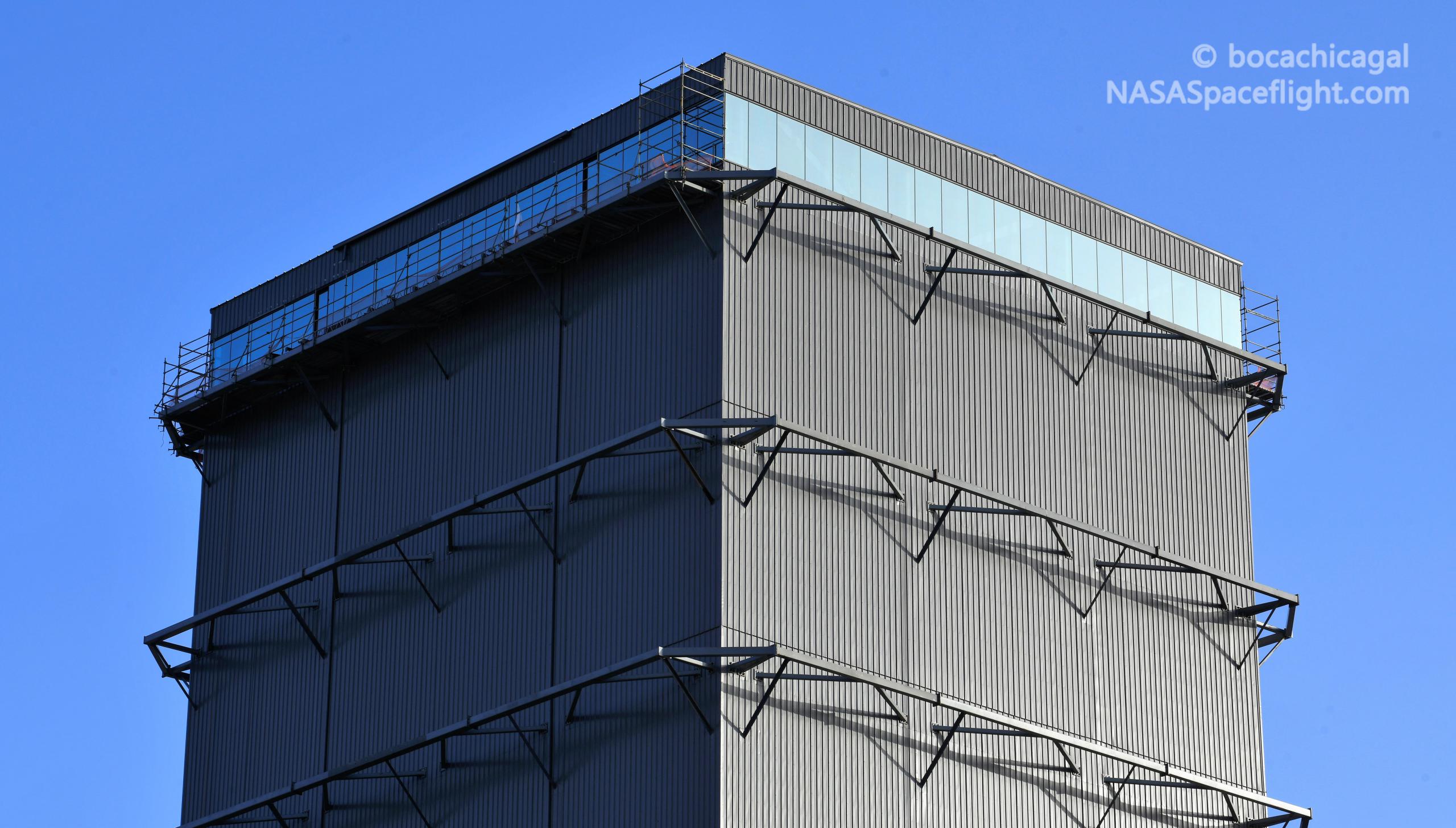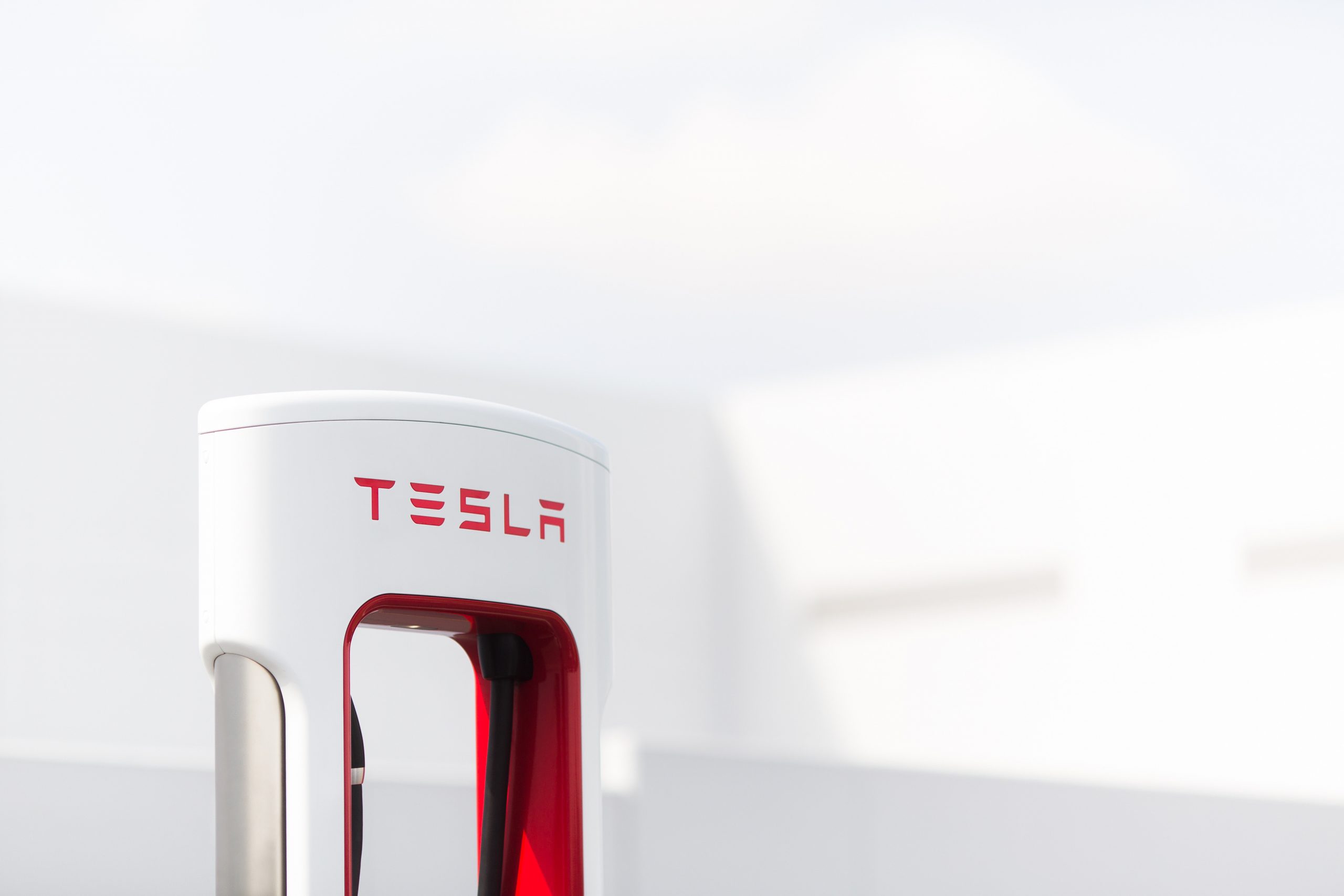

News
SpaceX Starship factory breaks ground on an even bigger ‘high bay’
SpaceX appears to have more or less broken ground on a new, even bigger ‘high bay’ assembly facility at its Boca Chica, Texas Starship factory.
Barely one year ago, SpaceX erected the first prefabricated steel sections of what eventually become its Starship factory ‘high bay’ – a spartan 81m (~265 ft) tall designed at the most basic level to shield final Starship and Super Heavy booster assembly from the elements. Situated near the southernmost tip of Texas and just a few miles west of the Gulf of Mexico, those “elements” can be less than pleasant at SpaceX’s primary Starship factory, ranging from sauna-like heat and humidity and mosquitoes the size of quarters to regular downpours, thunderstorms, tropical conditions, and even hurricanes.
While a great deal of work at Starbase is still done out in the open with little more than an umbrella as protection, SpaceX has nevertheless worked to find a middle ground where the most sensitive work (mainly structural welding) can be mostly shielded from wind and rain. First, SpaceX built a (relatively) tiny ‘windbreak’ too small for much of anything. Two years later, the windbreak is partially used for Starship nose section assembly – when a nose cone is stacked on and welded to a separate stack of four steel rings.
A few months after the triangular windbreak was fully finished, SpaceX started work on a larger box-like building that would eventually be known as the Starship factory’s ‘midbay.’ Standing around 45m (~150 ft) tall, the midbay was designed to support the process of assembling Starship tank sections from several stacks of 2-4 steel rings but was – for whatever reason – left too short to support the full Starship assembly process.
Instead, once Starship tank sections were finished, they would have to be rolled out of the midbay for nose installation. Eventually, in July 2020, SpaceX began assembling an even larger ‘high bay’ that would ultimately measure 81m (~265 ft) tall and 20-25m (65-80 ft) wide and deep – easily big enough to fit the company’s existing Falcon 9 or Falcon Heavy rockets with room to spare. More importantly, of course, the high bay was built to be large enough to support Super Heavy assembly from start to finish, giving SpaceX teams a sheltered place to build the largest rocket boosters in history.
As of August 2021, SpaceX’s midbay has supported the assembly of 10 Starship prototypes, 5-6 propellant storage tanks, and several ‘test tanks,’ while the newer high bay has helped SpaceX build three (mostly) complete Super Heavy boosters in 2021. However, working at full speed, SpaceX’s midbay is really only capable of supporting the assembly of one Starship tank section (and more general work on two) at a time and the high bay – while offering at least twice the covered surface area – appears to be limited to simultaneous work on two or three different stacks (boosters, ships, tanks, etc.).
As SpaceX slowly but surely treks towards the end of approximately two years almost exclusively dedicated to building ever-changing prototypes, it’s been clear for a while that the company would need to drastically expand its production facilities to produce the dozens of Starships and boosters CEO Elon Musk has been publicly dreaming of. Even at lower volumes, those existing facilities – while great for producing a dozen or more prototypes per year – would still become a chokepoint for the near-term production of a small fleet of operational Starships and Super Heavies.
Construction starts soon on a much larger high bay just north of current high bay— Elon Musk (@elonmusk) July 25, 2021
In turn, Musk revealed that SpaceX was about to start building “a much larger high bay” adjacent to the existing structure in late July. On August 20th, a little over a year after assembly of the original high bay kicked off, SpaceX began the process of tearing up existing concrete for the even larger bay – breaking ground, at least in a sense. According to Musk, the newest addition to Starbase’s Starship factory will be about 10% taller (~90m vs 81m), substantially wider, and likely a bit deeper than the existing high bay, allowing for the installation of two side-by-side bridge cranes with tracks running the full width of the building.
With at least 2-3 times more surface area than the high bay, the new wide bay should give SpaceX enough space to simultaneously assemble something like 4-8 Starships or Super Heavy boosters. Depending on which direction SpaceX goes, the wide bay could also potentially be large enough for SpaceX to create the first true Starship and Super Heavy assembly lines, though that would be a substantial departure from Starbase’s existing approach to manufacturing.

News
Tesla FSD’s newest model is coming, and it sounds like ‘the last big piece of the puzzle’
“There’s a model that’s an order of magnitude larger that will be deployed in January or February 2026.”

Tesla Full Self-Driving’s newest model is coming very soon, and from what it sounds like, it could be “the last big piece of the puzzle,” as CEO Elon Musk said in late November.
During the xAI Hackathon on Tuesday, Musk was available for a Q&A session, where he revealed some details about Robotaxi and Tesla’s plans for removing Robotaxi Safety Monitors, and some information on a future FSD model.
While he said Full Self-Driving’s unsupervised capability is “pretty much solved,” and confirmed it will remove Safety Monitors in the next three weeks, questions about the company’s ability to give this FSD version to current owners came to mind.
Musk said a new FSD model is coming in about a month or two that will be an order-of-magnitude larger and will include more reasoning and reinforcement learning.
He said:
“There’s a model that’s an order of magnitude larger that will be deployed in January or February 2026. We’re gonna add a lot of reasoning and RL (reinforcement learning). To get to serious scale, Tesla will probably need to build a giant chip fab. To have a few hundred gigawatts of AI chips per year, I don’t see that capability coming online fast enough, so we will probably have to build a fab.”
NEWS: Elon Musk says FSD Unsupervised is “pretty much solved at this point” and that @Tesla will be launching Robotaxis with no safety monitors in about 3 weeks in Austin, Texas. He also teased a new FSD model is coming in about 1-2 months.
“We’re just going through validation… https://t.co/Msne72cgMB pic.twitter.com/i3wfKX3Z0r
— Sawyer Merritt (@SawyerMerritt) December 10, 2025
It rings back to late November when Musk said that v14.3 “is where the last big piece of the puzzle finally lands.”
With the advancements made through Full Self-Driving v14 and v14.2, there seems to be a greater confidence in solving self-driving completely. Musk has also personally said that driver monitoring has been more relaxed, and looking at your phone won’t prompt as many alerts in the latest v14.2.1.
This is another indication that Tesla is getting closer to allowing people to take their eyes off the road completely.
Along with the Robotaxi program’s success, there is evidence that Tesla could be close to solving FSD. However, it is not perfect. We’ve had our own complaints with FSD, and although we feel it is the best ADAS on the market, it is not, in its current form, able to perform everything needed on roads.
But it is close.
That’s why there is some legitimate belief that Tesla could be releasing a version capable of no supervision in the coming months.
All we can say is, we’ll see.
Investor's Corner
SpaceX IPO is coming, CEO Elon Musk confirms
However, it appears Musk is ready for SpaceX to go public, as Ars Technica Senior Space Editor Eric Berger wrote an op-ed that indicated he thought SpaceX would go public soon. Musk replied, basically confirming it.

Elon Musk confirmed through a post on X that a SpaceX initial public offering (IPO) is on the way after hinting at it several times earlier this year.
It also comes one day after Bloomberg reported that SpaceX was aiming for a valuation of $1.5 trillion, adding that it wanted to raise $30 billion.
Musk has been transparent for most of the year that he wanted to try to figure out a way to get Tesla shareholders to invest in SpaceX, giving them access to the stock.
He has also recognized the issues of having a public stock, like litigation exposure, quarterly reporting pressures, and other inconveniences.
However, it appears Musk is ready for SpaceX to go public, as Ars Technica Senior Space Editor Eric Berger wrote an op-ed that indicated he thought SpaceX would go public soon.
Musk replied, basically confirming it:
As usual, Eric is accurate
— Elon Musk (@elonmusk) December 10, 2025
Berger believes the IPO would help support the need for $30 billion or more in capital needed to fund AI integration projects, such as space-based data centers and lunar satellite factories. Musk confirmed recently that SpaceX “will be doing” data centers in orbit.
AI appears to be a “key part” of SpaceX getting to Musk, Berger also wrote. When writing about whether or not Optimus is a viable project and product for the company, he says that none of that matters. Musk thinks it is, and that’s all that matters.
It seems like Musk has certainly mulled something this big for a very long time, and the idea of taking SpaceX public is not just likely; it is necessary for the company to get to Mars.
The details of when SpaceX will finally hit that public status are not known. Many of the reports that came out over the past few days indicate it would happen in 2026, so sooner rather than later.
But there are a lot of things on Musk’s plate early next year, especially with Cybercab production, the potential launch of Unsupervised Full Self-Driving, and the Roadster unveiling, all planned for Q1.
News
Tesla adds 15th automaker to Supercharger access in 2025

Tesla has added the 15th automaker to the growing list of companies whose EVs can utilize the Supercharger Network this year, as BMW is the latest company to gain access to the largest charging infrastructure in the world.
BMW became the 15th company in 2025 to gain Tesla Supercharger access, after the company confirmed to its EV owners that they could use any of the more than 25,000 Supercharging stalls in North America.
Welcome @BMW owners.
Download the Tesla app to charge → https://t.co/vnu0NHA7Ab
— Tesla Charging (@TeslaCharging) December 10, 2025
Newer BMW all-electric cars, like the i4, i5, i7, and iX, are able to utilize Tesla’s V3 and V4 Superchargers. These are the exact model years, via the BMW Blog:
- i4: 2022-2026 model years
- i5: 2024-2025 model years
- 2026 i5 (eDrive40 and xDrive40) after software update in Spring 2026
- i7: 2023-2026 model years
- iX: 2022-2025 model years
- 2026 iX (all versions) after software update in Spring 2026
With the expansion of the companies that gained access in 2025 to the Tesla Supercharger Network, a vast majority of non-Tesla EVs are able to use the charging stalls to gain range in their cars.
So far in 2025, Tesla has enabled Supercharger access to:
- Audi
- BMW
- Genesis
- Honda
- Hyundai
- Jaguar Land Rover
- Kia
- Lucid
- Mercedes-Benz
- Nissan
- Polestar
- Subaru
- Toyota
- Volkswagen
- Volvo
Drivers with BMW EVs who wish to charge at Tesla Superchargers must use an NACS-to-CCS1 adapter. In Q2 2026, BMW plans to release its official adapter, but there are third-party options available in the meantime.
They will also have to use the Tesla App to enable Supercharging access to determine rates and availability. It is a relatively seamless process.








